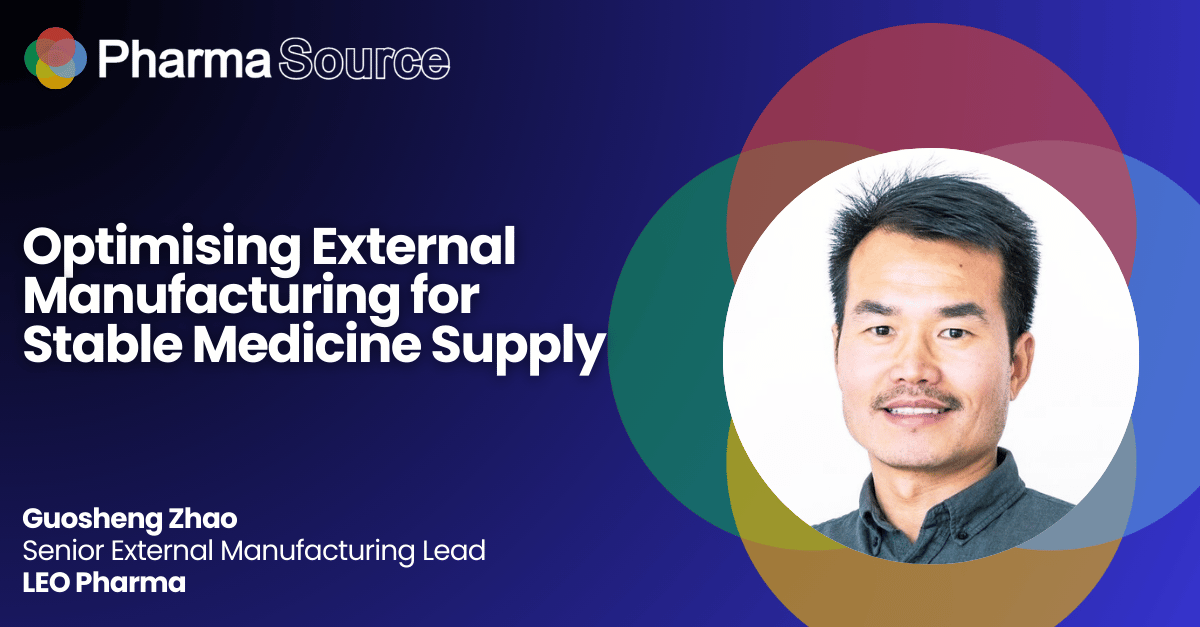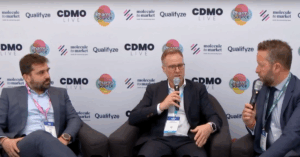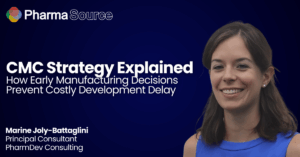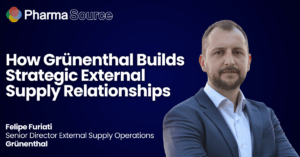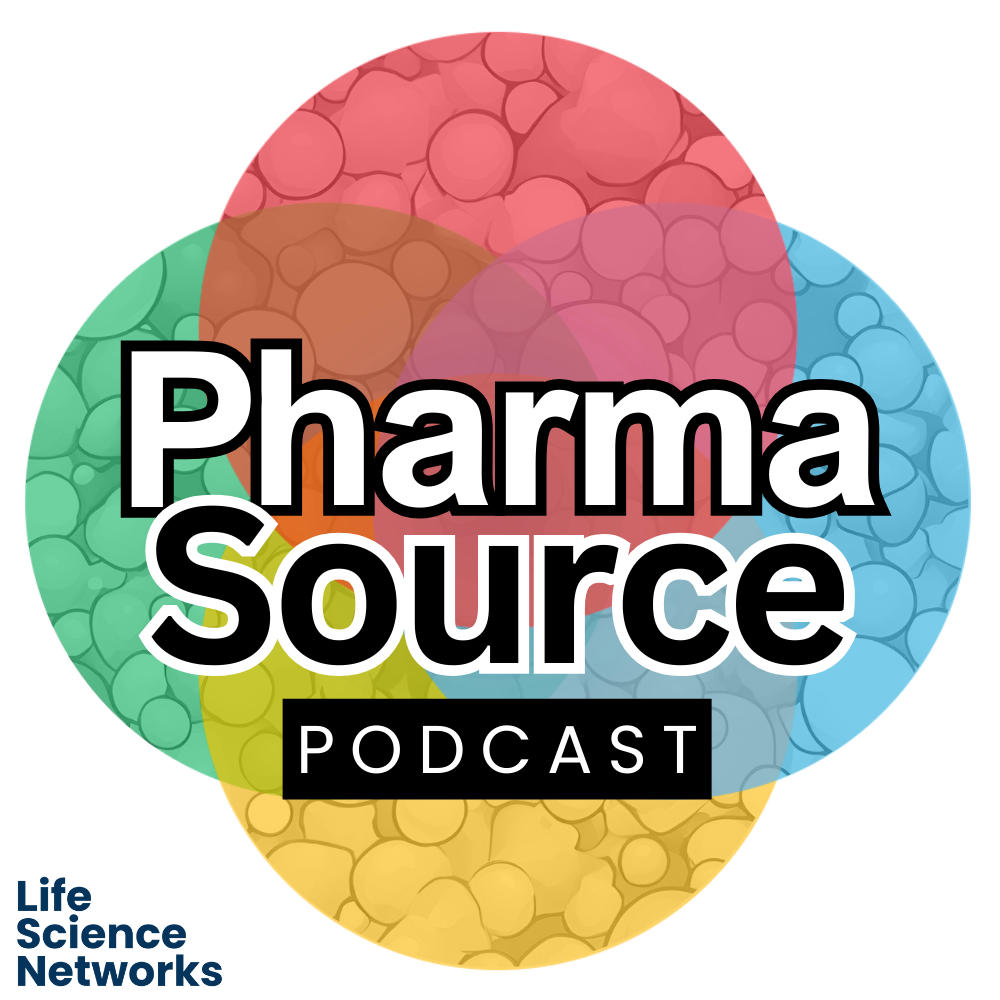“Building mutual understanding and trust is the foundation for optimising performance and driving innovation with contract manufacturing organisations (CMOs),” says Guosheng Zhao, Senior External Manufacturing Lead at LEO Pharma.
Guosheng Zhao brings years of experience in procurement, management consulting at PWC, and working with contract manufacturers at companies such as Procter and Gamble and Philips to his role.
At LEO Pharma, Guosheng is responsible for external manufacturing of dermatology and thrombosis medicines, a portfolio spanning both small molecules and biologics, with a focus on maintaining stable product supply and quality across complex global supply chains.
In the latest PharmaSource podcast episode, Guosheng explains why effective supplier relationship management is crucial for reducing costs, improving margins, and ensuring consistent medicine supply for patients.
Bridging Procurement and External Manufacturing
The journey from procurement to external manufacturing
Guosheng highlights the key differences between procurement and external manufacturing roles:
“In procurement, you work to support the business by selecting vendors, onboarding them, and providing initial support. Once that’s done, your primary responsibility ends, aside from occasional contract renegotiations,” he explains.
“In external manufacturing, however, you’re responsible for ongoing performance management and relationship building. This includes ensuring stable product supply, maintaining quality standards, and overseeing various operational aspects like supply chain, regulatory affairs, and finance.”
Securing Stable Medicine Supply
Strategies for maintaining product availability and quality
Guosheng emphasises that adding CMOs to the supply chain introduces additional complexity and risk. To mitigate these challenges, he recommends:
- Regular performance monitoring of CMOs
- Close oversight of both in-house and CMO-managed supply chains
- Proactive quality management
- Staying abreast of regulatory changes, such as the EU’s GMP Annex 1
- Ongoing contract review and management
“To manage this large group of stakeholders effectively, we have an external manufacturing team involving all functions: supply chain, quality, regulatory affairs, technical, legal, procurement, and finance,” Guosheng says. “As the lead, I ensure each work stream is on task and timeline, adjusting as needed based on changing situations or regulatory guidelines.”
Building a Collaborative Culture
Fostering teamwork in a remote environment
Creating a strong partnership between internal teams and CMOs is crucial, especially in today’s remote working environment. Guosheng shares his approach:
“I hold monthly team meetings online with both internal and external stakeholders. However, in-person collaboration remains vital. Twice a year, I arrange visits to the CMO, often bringing colleagues from different functions. These face-to-face interactions are essential for building understanding and trust.”
To enhance remote collaboration, Guosheng recommends:
- Weekly work-focused online meetings
- Regular informal “coffee talk” sessions to discuss non-work topics and address any challenges
- Balancing virtual and in-person interactions when possible
Selecting the Right CMO Partners
Looking beyond traditional metrics
While traditional CMO selection processes focus on factors like facilities, capacity, technology, quality, and price, Guosheng argues for considering an often-overlooked aspect: cultural fit.
“It’s super beneficial if you and the CMO have a common understanding, allowing for smoother collaboration instead of constantly challenging each other’s work methods,” he explains. “Sometimes you need to follow the structured criteria, but you also need to feel it’s right to work with the CMO.”
Guosheng notes that geographical and cultural differences can present challenges, particularly when working with CMOs in different continents. Time zones, regulatory requirements, and communication styles all play a role in the partnership’s success.
Driving Innovation and Efficiency
Leveraging technology and partnerships for continuous improvement
Guosheng sees great potential in digital technologies to enhance efficiency and transparency in external manufacturing. He highlights one area ripe for innovation:
“For biologics, visual inspection is still often 100% manual. I’d like to see a breakthrough in machine learning that can automate this process, training computers on millions of images to significantly improve productivity.”
Advice for Aspiring External Manufacturing Professionals
Key insights for success in the field
For those looking to transition into external manufacturing, Guosheng offers the following advice:
- Develop a strong supply chain background to understand the entire production process.
- Be prepared to learn extensively about the highly regulated pharmaceutical industry.
- Cultivate curiosity about the products and processes to identify areas for improvement.
- Understand the potential challenges and opportunities in managing product supply.
By focusing on these areas, professionals can position themselves for success in the dynamic world of pharmaceutical external manufacturing and supply chain management.

